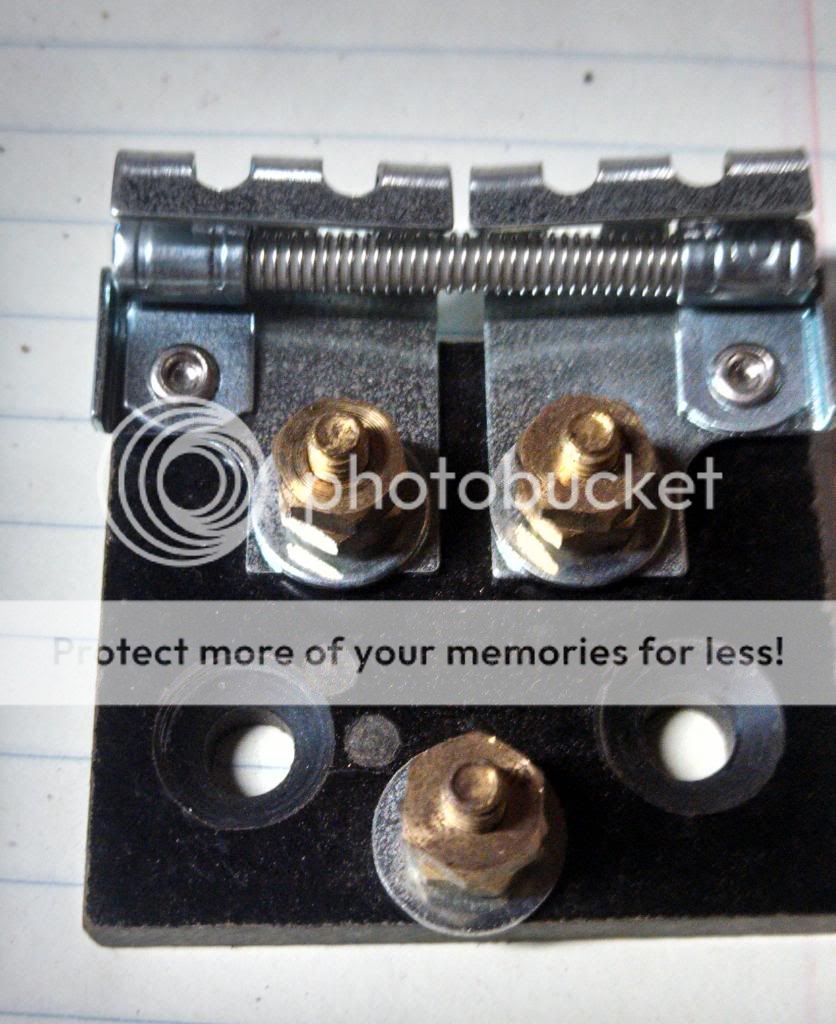" One question I have is with a 12V coil, do I need a resister in line. "
All you need is the OEM ballast resistor & no other. See tip # 30 at the link. (as in the picture)
If you have the OEM ballast resistor & a 6v coil, that is all you need.
First, put your battery on a charger.
You need a strong battery to:
1. Spin the starter
2. Engage the bendix
3. Provide voltage to the coil.
As the battery gets weaker, the first thing to fail is your spark.
The more current you use to spin the starter, the less you have for the ignition.
Assuming that the bushings & advance weights are ok (*see below), & that you have correct voltage to the coil (battery voltage with the points open and about half that with the points closed), the problem is in the distributor.
Once you get the distributor on the bench, the first thing you need to check is bushing wear. If the shaft has any sideways movement AT ALL, the bushings must be replaced. (*** see below).
The most common electrical failure (no spark, weak spark) points on the front mount are:
1. The insulator under the brass concave head screw & where the copper strip attaches. (it’s fiber & will wear out; poke & prod w/ your meter leads to make sure it still works) If you need to replace the insulator, use a .250 x 3/8 nylon square nylon anchor nut available at most big box home stores
2. The pigtail at the bottom of the coil not making contact w/ the concave head brass screw inside the distributor. (With the coil on, the pigtail must firmly contact the brass screw. No contact = no spark
3. The copper strip is broken or grounded to the plate. (look very carefully for cracks & breaks).
4. The condenser wire grounding to the plate or side of the distributor.
5. The tab on the bottom of the coil not making contact w/ the brass button on the cap. (With the cap on, the tab must firmly contact the brass button. No contact = no spark.)
6. Incorrect positioning of the spring clip on the plate causing the pigtail to ground. (the open part of the clip goes between 7 & 9 o’clock on the plate. That puts the straight part of the clip opposite of the timing screw at 3 o’clock)
7. Incorrect seating of the coil on the distributor due to a loose bail or no gasket.(the coil must not move at all; if it does, replace the gasket or bail. Or stick some cardboard under the bail).
8. Water/moisture inside the cap due to gasket failure or the absence of a gasket. (the cap AND coil have gaskets)
9. Dirty/corroded/burned/incorrectly gapped or misaligned points. I use only Wells, Blue Streak or Echlin brand points (* *see below). If you are using quality points and cannot get the gap to open to .015, chances are you need to replace the bushings.
10. Burned rotor, cracked/carbon tracked cap.
After you find the problem & re-check the point gap, do a continuity check before you put the distributor back on the tractor.
Before you start, make sure your meter/light works.
With the distributor still off the tractor, follow these steps:
1. Coil off, cap off, points open. One probe on the brass screw & the other on both sides of the open points. On the side closest to the cam, you should have continuity. Not on the other side! If you do, you will also have continuity everywhere because the points are grounded.
2. Coil off, cap off, points open. One probe on the brass screw & the other anywhere on the body of the distributor. You should have no continuity! Now, rotate the tang on the distributor....as the points open & close, you have continuity (closed) and lose it when they open.
3. Put the coil on the distributor, cap off, points open. One probe on the lead on the top of the coil, the other on the cam side of the open points. You should have continuity!
4. Coil on, cap off, points open. One probe on the lead on the top of the coil, the other anywhere on the body of the distributor. You should have no continuity!
At this point, I just put the distributor, coil & cap all back on the tractor as a unit. The reason I do this is because it is real easy to get the cap or coil misaligned trying to put it back together, one piece at a time. The result is something gets broken or you get a ‘no spark’ problem.
Post back w/ results or more questions.
* Remove the C clip to get the plate out. Remove the shaft & weights. The weights should freely move.
* *NAPA part numbers:
• Points: FD-6769X
• Condenser: FD-71
• Rotor: FD-104
• Cap: FD-126
*** There are three ways to replace the bushings in a front distributor:
1. Buy new bushings (part numbers 9N12120 front & 18-12132 rear). Press out the old ones, press in the new ones and ream to fit. CAUTION: do not try this unless you have a press & know how to use it. If you break the base, a new one costs $130. If you bend the tower which holds the front bushing, a new plate will cost you $30.
2. Take the new bushings and distributor to your local machine shop.
3. Send the distributor out for bushing replacement if you do not have a local machine shop.
75 Tips

